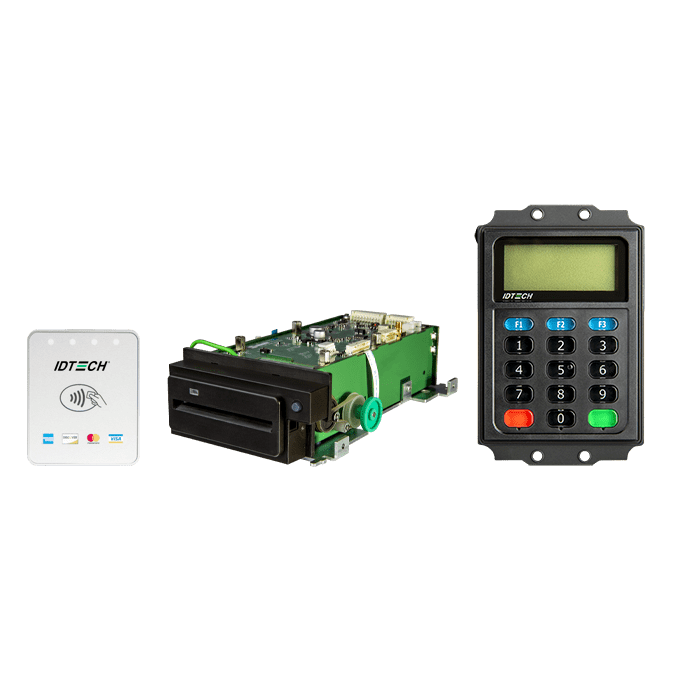VP5300M Bundle with SmartPIN L80
Includes our VP5300M, VP5300 NFC Antenna, and SmartPIN L80 products for unattended payment environments.
VP5300M Bundle
The VP5300M Bundle is an effective unattended payment solution for use in parking, transit, and ticketing payment situations.
It includes the world’s first PCI SRED certified MSR, EMV contact, and EMV contactless all-in-one secure motorized payment acceptance reader. The VP5300M Bundle is an excellent upgrade replacement to all existing unattended and motorized payment solutions.
Download Datasheet


VP5300M Bundle
The VP5300M Bundle is an effective unattended payment solution for use in parking, transit, and ticketing payment situations.
It includes the world’s first PCI SRED certified MSR, EMV contact, and EMV contactless all-in-one secure motorized payment acceptance reader. The VP5300M Bundle is an excellent upgrade replacement to all existing unattended and motorized payment solutions.
Download Datasheet

Featured Products
Key Features
- All-in-one secure motorized payment acceptance
- Weather resistant, rugged design
- Supports all major mobile wallets
- Secure design for unattended situations
- PCI Certified Remote Key Injection
- Can pair with L80 for Chip-PIN transactions
Tell Me More
"*" indicates required fields


